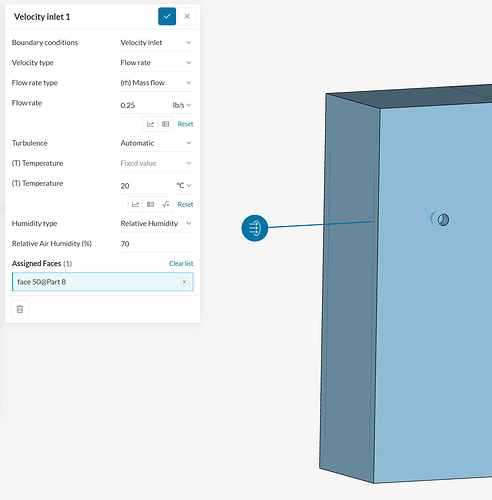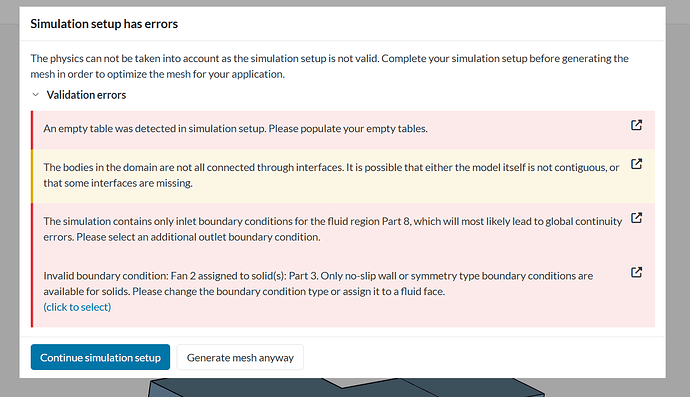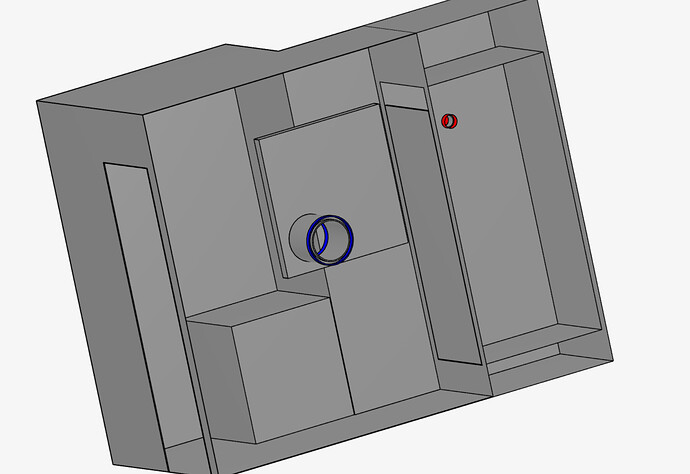Hello,
I am trying to build a simulation for my college course that shows humidity percentage rising in a bathroom from the shower head. I would also like to show the humidity reduction when installing a fan.
Project:
CAD and current simulation setup:
I currently have a hole representing the shower head and have set it as a Velocity inlet, part8:
Fan set to part3:
And various faces, part 1, set as walls to keep the water vapor inside the model.
I have a few validation errors that are showing up while trying to generate a Mesh:
1: I cannot find which “table” information is missing and needs filled in
2: How would I fix this interfaces error, I suspect the “door” is what the simulation is mad about but I would like a door to simulate the normal layout of a bathroom.
3: If I create an inlet and an outlet for a part I only see humidity in that part instead of the whole model.
4: How would I assign a fan to a part if the simulation only wants non-solid objects?
Example for 3:
My partner was successful in getting a simulation to generate at one point with different faces of part1 set as inlet and outlet, but now it fails to run.
I did try an internal flow volume, but that generated a mass amount of errors that I did not understand, but I did start working with the “Meeting Room” tutorial to better understand it.
Overall, I need a room that generates humidity that I can manipulate with a fan.






